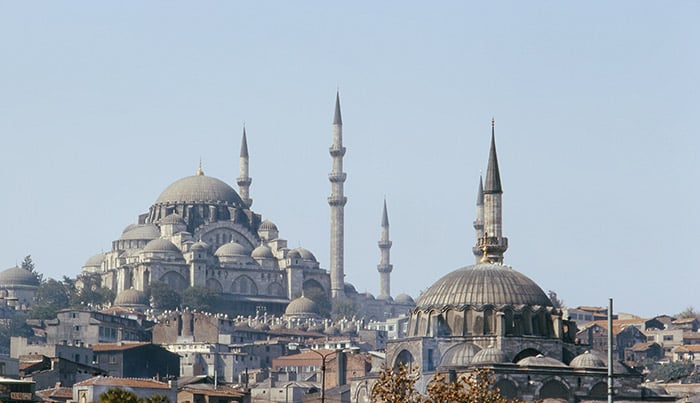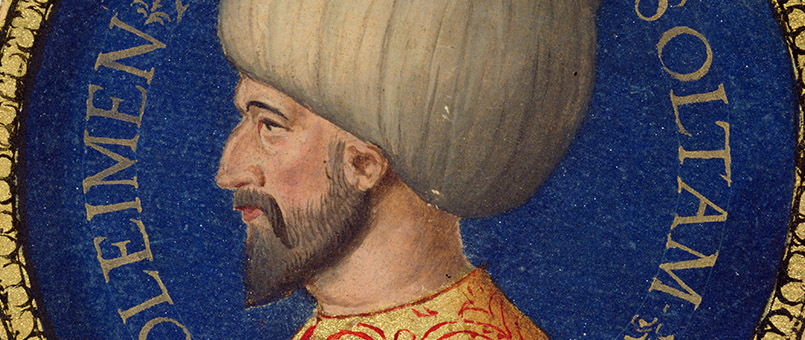
450th anniversary of the death of Suleiman the Magnificent
The 7th September 2016 marks the 450th anniversary of the death of Suleiman the Magnificent, the Ottoman Empire’s longest reigning Great Sultan. Take a look at his military success and the impact that he had on the Empire’s culture.
Early life
Suleiman the Magnificent, born in Trabzon on the 6th November 1494, was to be the Ottoman Empire’s longest reigning Great Sultan. Aged seevn he was sent to study science, history, literature, theology and military history at the Schools of the Imperial Topkapi palace in Constantinople. After the Death of his father, Selim I, in 1520 he succeeded to the throne as the tenth Ottoman Sultan.
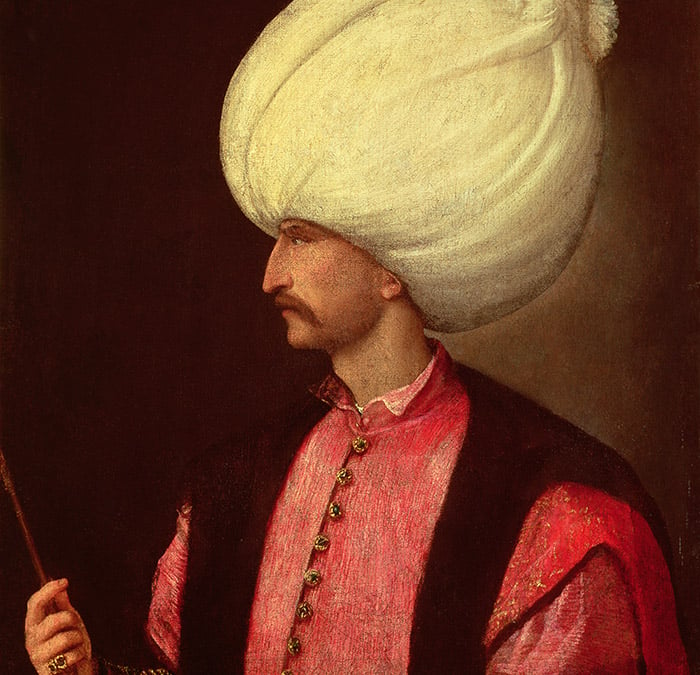
Suleiman II (oil on canvas), Italian School, (16th century) / Kunsthistorisches Museum, Vienna, Austria
Military History
Suleiman’s Imperial campaigns led to the Ottoman Empire becoming the most powerful state in the world. At its peak, its territories stretched from the Arabian Peninsula to Vienna. Thirteen Ottoman campaigns were personally led by Suleiman; the majority of these directed to the West.
His first major campaign was the capture of Belgrade and then Mohacs. In 1529, the siege of Vienna signaled the strength of the Ottoman Empire’s military. Although many other campaigns took place, none secured Ottoman territory.
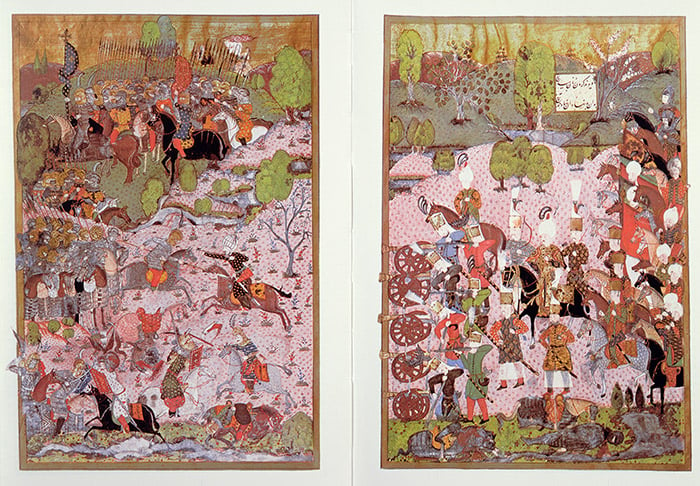
The Battle of Mohacs, between the Turks and Hungarians, 1526, facsimile of a miniature conserved in the Topkapi Museum in Istanbul – Archives Charmet
The Ottoman fleet again under Suleiman’s rule managed to capture large areas of North Africa reaching all the way to Algeria. With this fleet he managed to dominate the Mediterranean, the Red Sea and the Persian Gulf.
After 46 years of ruling the Ottoman Empire he went to war for the last time. It was during the siege of Szigetvar that Suleiman died the day before they were victorious.
Suleiman’s cultural achievements
Being an educated man, cultural achievements were very important to Suleiman. He took the Ottoman Empire into the golden age of its cultural development. Imperial artistic societies called Ehli-I Hiref (community of the talented) were created to attract the most talented artists and craftsmen from all over the empire. After an initial apprenticeship they could advance in rank and pay. Payrolls, the earliest dating to 1526, list 40 societies with over 600 members.
Having studied literature, Suleiman was also an accomplished poet. Some of his verses have become Turkish proverbs.
He also sponsored huge architectural developments especially in Constantinople, building bridges, mosques and palaces. Suleiman’s chief architect, Mimar Sinan, was responsible for many of these projects, for example the building of the Suleymaniye Mosque and the restoration of the Dome of the Rock and the Jerusalem city walls. It was in this period that Ottoman architecture reached its peak.
The Empire and its culture
The Ottoman or Turkish Empire was founded in 1299 by Osman I, of the House of Osman. The centre of the Empire was Constantinople and it had huge territories through Europe, Africa and the Middle East, lasting hundreds of years. It had a very strong and distinct culture.
Carpet weaving was particularly significant in the empire. Carpets were both decorative, a symbol of piety, and practical. They were not just used on the floors of rooms but also as wall hangings.
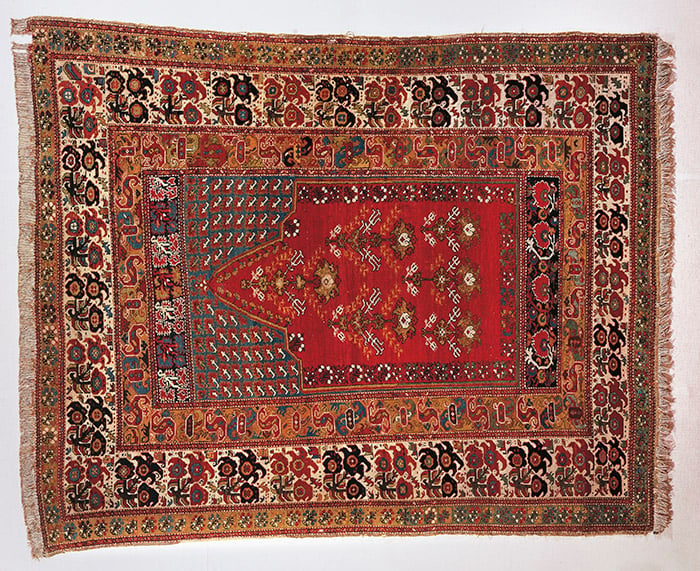
Ottoman prayer rug, Gordes, Turkey, 19th century; Museum of Turkish and Islamic Art, Istanbul, Turkey
The Empire was famous for the quality of its goldsmiths and silversmiths and the jewellery that they produced. Silver was the most common material used with gold only for the most important and highest status pieces.
Miniatures were common in this period, depicting manuscripts, they were heavily influenced by Persian art forms.
Literature again was heavily inspired by Persian culture with many Persian loanwords entering the language. Poetry was the main source of literature, prose being less popular, far less developed and exclusively non-fiction.
Performance was very important to the Ottoman culture whether that be music or dance. The Empire had a very distinct style of court music particularly in vocal form accompanied by an instrument. Dancing included the folkloric dancing traditions of many different countries.
Save
Save
Save

